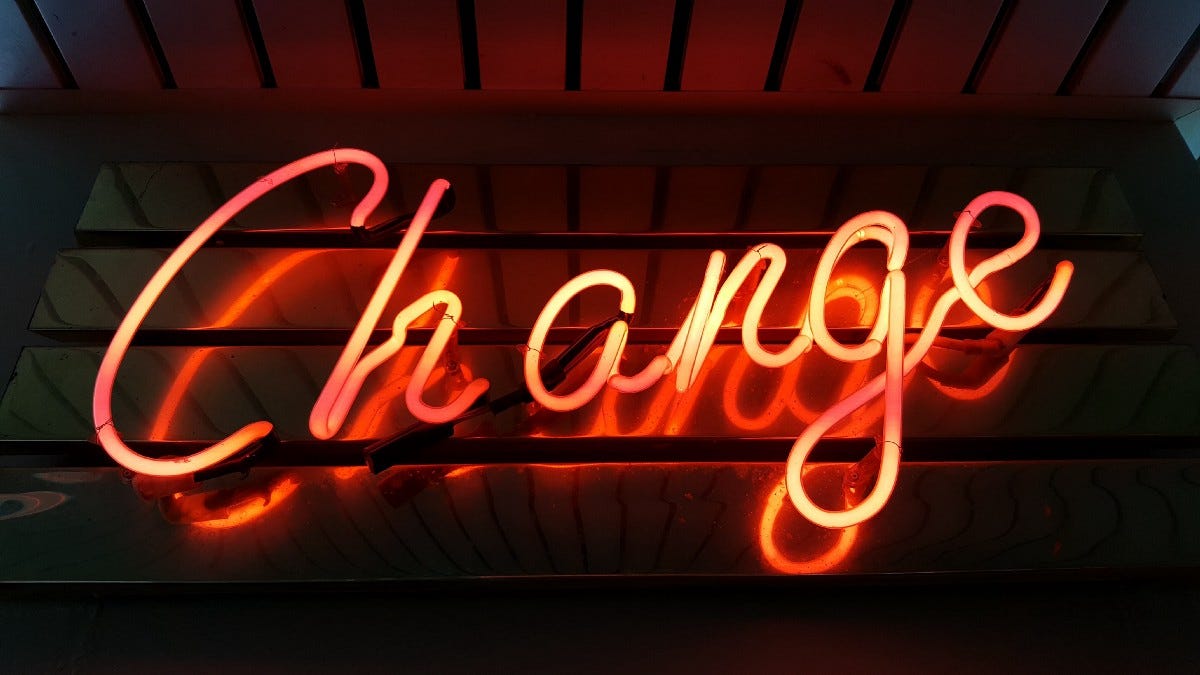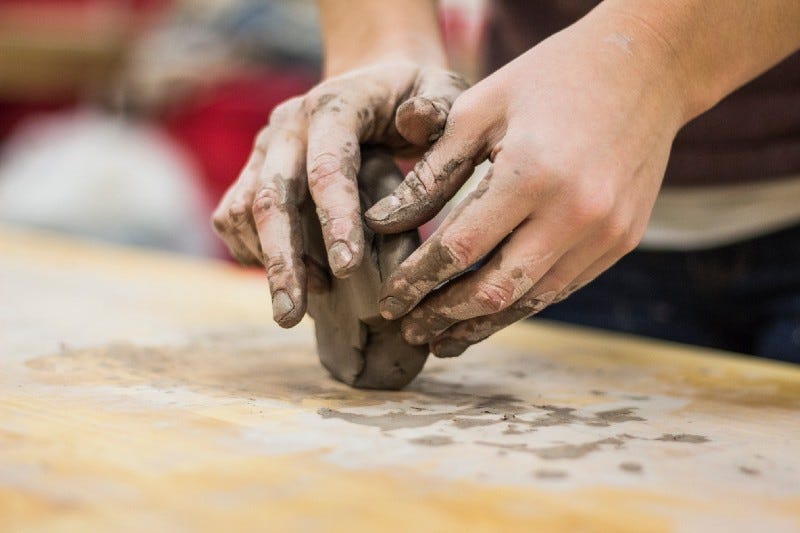
Photo by Ross Findon
The brief will change.
Your team configuration will change.
Your design system, halfway through your project, will change.
UI trends will change every few months.
Your product’s target audience will change as your product evolves.
Your product’s KPIs will change.
Your personal KPIs will change.
The way you present your work will change — depending on context, audience, and objectives.
Your favorite design tool will change. Get over it.
Your initial design, as it gets to development, will change.
Your role and your job description will change many times throughout your career.
Your habits in the workplace will change.
Your vocabulary will (and should) continuously change.
The company you work for, will change.
The topics you read about will change.
Your personal interests will change.
There might be a global pandemic all of a sudden that will change everything.
The questions you ask in a meeting will change.
The mistakes you make will change (they better!).
The zeitgeist and the topics people care about, will change.
Your design process will change.
The lies you tell yourself will change.
Only when you understand, recognize, and accept change is coming, you can future-proof yourself as a designer. Instead of trying to keep things exactly as they are, focus your energy on the things that will never change. In my experience, these are unlikely to change:
Design fundamentals
Collaboration
Communication

Photo by Alex Jones
Design fundamentals won’t change
There are certain foundational design principles that will never change. They are the source material for anything you create — no matter if you’re working on a website, a mobile app, an ATM machine, a virtual reality experience, a poster, a TV application, a digital kiosk.
Start here: visual hierarchy, information architecture, balance, alignment, composition, proximity, continuation, repetition, framing, mimicry, readability, contrast, consistency, affordances, feedback, orientation, similarity, closure, horror vacui, symmetry, inputs, navigation.
These should give you enough to focus on for the first 10 years of your career. Master these. Really master these. Strive for perfection. Improve your skills. Rinse, repeat. You can never un-learn such principles. Technology will always change; these won’t.

Photo by Josh Calabrese
The importance of collaboration won’t change
Design is a team sport. While the specific tools you use, your workflow, and the way you collaborate with folks from other disciplines might change, the need for collaboration will always be an important part of your job. Unless you are a design-strategy-technology-team-of-one, you will always depend on other people to get things done as a digital product designer. Multiple hands get work done faster. Multiple perspectives make the work stronger.
How you collaborate with your peers might change. Why you collaborate won’t.
Learning to be a great collaborator is a tough skill to master. Through the course of your career you will work with different people, who have different work styles, different agendas, and who follow a different process than you.
Get better, smarter, and faster at collaborating. Focus on improving your soft skills. Understand what motivates people, and learn to use that mechanism to your advantage. There’s a fine balance between having a strong point of view over your work, and being malleable to incorporate other points of view that will lead to better work. While amateur designers focus on being right, professional designers focus on getting the best outcome — no matter where the ideas come from.
The power of clear communication won’t change
Let’s start this one with a little video. A dad asks their kids to write down instructions on how to make a peanut butter and jelly sandwich — and then he follows their instructions quite literally.
While this is a fun video to watch, the man is teaching his kids a pretty valuable lesson. People will have their own interpretation of signs and messages according to their own repertoire (hi Semiotics 👋). You cannot control how people will interpret your message, but you can surely be more thoughtful about how you communicate it in the first place.
Clarity is the holy grail in design. Ambiguity is your enemy.
Clear communication is important not only in your designs (more clarity = better user experience), but also in the way you collaborate with your peers. It’s not uncommon to see design teams who spin their wheels to be able to make progress in their work for the simple fact there is lack of clarity in the way people communicate with one another. Not to mention really solid and smart design work that gets killed simply because the designer wasn’t able to communicate their thinking clearly to other team members, clients, or stakeholders.
Change, in design, is inevitable. Letting go of the things you can’t control is not only an important exercise for preserving your sanity, but can help you focus your energy on skills that are timeless and crucial in the long run.
This story is part of Journey: lessons from the amazing ride of being a designer.

The UX Collective donates US$1 for each article published in our platform. This story contributed to UX Para Minas Pretas (UX For Black Women), a Brazilian organization focused on promoting equity of Black women in the tech industry through initiatives of action, empowerment, and knowledge sharing. Silence against systemic racism is not an option. Build the design community you believe in.

